blankets and throws to knit 

 I dedicate this book to Heddy, my mother, who worked with unwavering commitment throughout the production of my designs for this book.
I dedicate this book to Heddy, my mother, who worked with unwavering commitment throughout the production of my designs for this book. 
Contents
Hand-knitting, for the creative designer, is not only a wonderful way to add to your wardrobe, but it is becoming ever more popular as a means of furnishing your home with uniquely crafted accessories. My intention, through this book, is to produce a range of knitted afghans that use a combination of yarns and decorative embellishments and that, at the same time, allow the knitter to experiment with exciting new ideas. My designs are a far cry from the traditional knitted blankets made up from old gauge squares. A range of different yarns in vibrant shades have been used, including denim, mohair, lurex, wools and cottons, along with brilliantly colored sequins, beads and hand-made buttons. This fusion of colors and textures creates hand-knitted textiles that are appealing to the eye and sympathetic to the touch.
These projects are an invitation to all knitters of varying abilities to pick up their needles and come with me on a creative adventure, discovering the endless opportunities that are offered on these pages. Because each afghan is made up of individual squares, the prospective knitter can take needles and yarns and literally knit anywhere - on the bus, the train, at work or in the home, with each square being worked separately and then later stitched together. There is an opportunity to follow the designs as shown, or if preferred, the knitter can create alternative versions by selecting different squares, by mixing squares taken from various designs, by choosing a personal choice of colors, or by experimenting with a variety of arrangements. Anything is possible! Debbie Abrahams  How to use this book Each separate square has full instructions, either in the form of a written pattern or a chart. In addition there is a color photograph of every square, with some squares having additional photographs showing different colorways. Each chart has a key next to it, and below is a summary of the various symbols used, both in the charts and with the patterns.
How to use this book Each separate square has full instructions, either in the form of a written pattern or a chart. In addition there is a color photograph of every square, with some squares having additional photographs showing different colorways. Each chart has a key next to it, and below is a summary of the various symbols used, both in the charts and with the patterns.
Before you start a square, check to see if it has a chart, a photograph or both. In addition there is a starting that has step-by-step instructions for intarsia knitting (the technique used for all of the squares), bead and sequin knitting, embroidery and piecing your afghan. Key  Square is charted
Square is charted  Square is illustrated with a photograph K on RS, P on WS
Square is illustrated with a photograph K on RS, P on WS  P on RS, K on WS
P on RS, K on WS  Place bead
Place bead  Place button
Place button  Lazy Daisy stitch center
Lazy Daisy stitch center  Cable six back
Cable six back
flower power
 Being a child of the seventies it was inevitable that I would be aware of the influence of Flower Power. Throughout history painters and designers have used a floral motif in numerous ways, I chose to use it for its connotations of color, serenity and well-being. The traditional custom of giving flowers as a sign of friendship and love is seen by all as a humane, kind gesture and the stylized flower motif that I have developed symbolizes this theme of peace and love. Bright, happy colors are embellished with beads and embroidered stitches that add interest and detail to the overall design.
Being a child of the seventies it was inevitable that I would be aware of the influence of Flower Power. Throughout history painters and designers have used a floral motif in numerous ways, I chose to use it for its connotations of color, serenity and well-being. The traditional custom of giving flowers as a sign of friendship and love is seen by all as a humane, kind gesture and the stylized flower motif that I have developed symbolizes this theme of peace and love. Bright, happy colors are embellished with beads and embroidered stitches that add interest and detail to the overall design.
While the flower is a basic repeating shape, variation is introduced through the texture, beads and embroidery. A significant feature of this afghan is the interspersing of vibrant stripes that are mixed with the floral motifs to create a checkerboard effect. SIZE 75in X 53in (192cm X 134cm) MATERIALS 1 pair US 5 (3.75mm/No. 9) needles 2 circular US 3 (3.25mm/No. 10) needles 39in (100cm) length Yarn Rowan Wool Cotton 1oz (50g) balls
| pale yellow | |
| bright orange | |
| mid blue | |
| royal blue | |
| red | |
| green | |
| magenta | |
| mauve | |
Rowan Lurex Shimmer (used double throughout) 1oz (25g) balls
Quantities given for individual squares are approximate fractions of a ball. Beads 3/16in (5mm) pebble beads
GAUGE (TENSION) sts and 32 rows to 4in (10cm) measured over patterned stockinette (stocking) stitch using US 5 (3.75mm/No. 9) needles.
NOTE Single stitch outlines on squares 

 and
and  can be . ABBREVIATIONS FINISHING The sizes given for the finished afghan and individual squares are approximate. The number of stitches in a row, and the number of rows in a square differ in some instances. Therefore, when sewing pieces together, ease the extra stitches or extra rows into the adjoining square. Press the individual squares using a damp cloth and warm iron. Sew the squares together, joining bound (cast) off edge of one square to the cast on edge of the next square, easing in stitches if necessary, to form vertical strips.
can be . ABBREVIATIONS FINISHING The sizes given for the finished afghan and individual squares are approximate. The number of stitches in a row, and the number of rows in a square differ in some instances. Therefore, when sewing pieces together, ease the extra stitches or extra rows into the adjoining square. Press the individual squares using a damp cloth and warm iron. Sew the squares together, joining bound (cast) off edge of one square to the cast on edge of the next square, easing in stitches if necessary, to form vertical strips.
Sew the vertical strips together, easing in rows if necessary, to create one block. Edging MATERIALS 2 circular US 3 (3.25mm/No. 10) needles 39in (100cm) length Rowan Wool Cotton 1oz (50g) balls
| red (A) | 4/5 |
| pale yellow (B) | 3/5 |
| royal blue (C) | 4/5 |
KNIT With RS facing and using A, pick up and knit 481 sts along the right-hand edge of the afghan. Beg with a WS row, cont to work in K1, P1 seed (moss) stitch, inc 1 st at each end of all RS rows, and foll the color stripe patt rep: A, 3 rows; B, 3 rows; C, 2 rows. With WS facing bind (cast) off knitwise. Rep for left-hand edge of afghan.
With RS facing and using A, pick up and knit 333 sts along bottom edge of the afghan. Rep edging as for right-hand and left-hand edges. Rep for top edge of afghan. Neatly sew border edges together. 
Next page
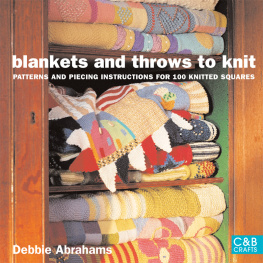
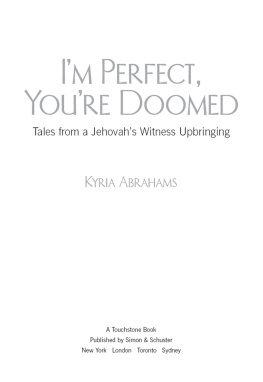

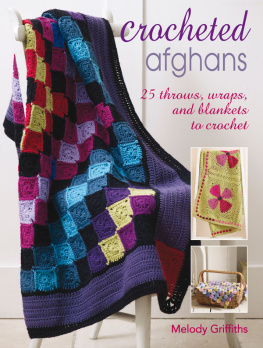
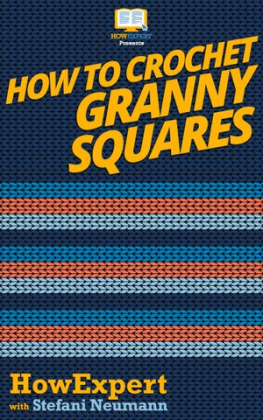
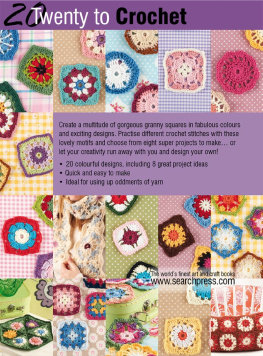
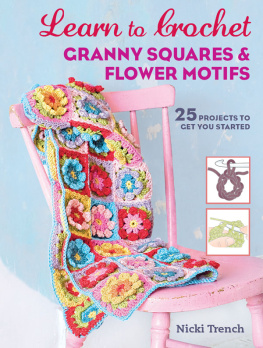

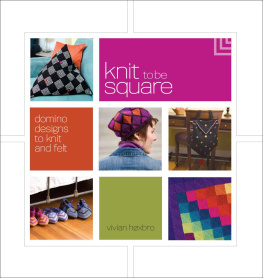


 I dedicate this book to Heddy, my mother, who worked with unwavering commitment throughout the production of my designs for this book.
I dedicate this book to Heddy, my mother, who worked with unwavering commitment throughout the production of my designs for this book. 
 How to use this book Each separate square has full instructions, either in the form of a written pattern or a chart. In addition there is a color photograph of every square, with some squares having additional photographs showing different colorways. Each chart has a key next to it, and below is a summary of the various symbols used, both in the charts and with the patterns.
How to use this book Each separate square has full instructions, either in the form of a written pattern or a chart. In addition there is a color photograph of every square, with some squares having additional photographs showing different colorways. Each chart has a key next to it, and below is a summary of the various symbols used, both in the charts and with the patterns. Square is charted
Square is charted  Square is illustrated with a photograph K on RS, P on WS
Square is illustrated with a photograph K on RS, P on WS  P on RS, K on WS
P on RS, K on WS  Place bead
Place bead  Place button
Place button  Lazy Daisy stitch center
Lazy Daisy stitch center  Cable six back
Cable six back Being a child of the seventies it was inevitable that I would be aware of the influence of Flower Power. Throughout history painters and designers have used a floral motif in numerous ways, I chose to use it for its connotations of color, serenity and well-being. The traditional custom of giving flowers as a sign of friendship and love is seen by all as a humane, kind gesture and the stylized flower motif that I have developed symbolizes this theme of peace and love. Bright, happy colors are embellished with beads and embroidered stitches that add interest and detail to the overall design.
Being a child of the seventies it was inevitable that I would be aware of the influence of Flower Power. Throughout history painters and designers have used a floral motif in numerous ways, I chose to use it for its connotations of color, serenity and well-being. The traditional custom of giving flowers as a sign of friendship and love is seen by all as a humane, kind gesture and the stylized flower motif that I have developed symbolizes this theme of peace and love. Bright, happy colors are embellished with beads and embroidered stitches that add interest and detail to the overall design.

 and
and  can be . ABBREVIATIONS FINISHING The sizes given for the finished afghan and individual squares are approximate. The number of stitches in a row, and the number of rows in a square differ in some instances. Therefore, when sewing pieces together, ease the extra stitches or extra rows into the adjoining square. Press the individual squares using a damp cloth and warm iron. Sew the squares together, joining bound (cast) off edge of one square to the cast on edge of the next square, easing in stitches if necessary, to form vertical strips.
can be . ABBREVIATIONS FINISHING The sizes given for the finished afghan and individual squares are approximate. The number of stitches in a row, and the number of rows in a square differ in some instances. Therefore, when sewing pieces together, ease the extra stitches or extra rows into the adjoining square. Press the individual squares using a damp cloth and warm iron. Sew the squares together, joining bound (cast) off edge of one square to the cast on edge of the next square, easing in stitches if necessary, to form vertical strips.